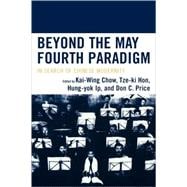
| Preface | p. vii |
| Acknowledgments | p. ix |
| Introduction | p. 1 |
| Commercial Printing and Language Reform | |
| Culture, Capital, and the Temptations of the Imagined Market: The Case of the Commercial Press | p. 27 |
| Canon Formation and Linguistic Turn: Literary Debates in Republican China, 1919-1949 | p. 51 |
| Gender and Family | |
| The Theory and Practice of Women's Rights in Late-Qing Shanghai, 1843-1911 | p. 71 |
| Exercising Women's Rights: Debates on Physical Culture since the Late Nineteenth Century | p. 95 |
| Generational and Cultural Fissures in the May Fourth Movement: Wu Yu (1872-1949) and the Politics of Family Reform | p. 131 |
| Nation, Science, and Culture | |
| The Politics of Fengjian in Late-Qing and Republican China | p. 151 |
| How Did the Chinese Become Native?: Science and the Search for National Origins in the May Fourth Era | p. 183 |
| Nationalizing Sound on the Verge of Chinese Modernity | p. 209 |
| Modernity and Its Chinese Critics | |
| Buddhism, Literature, and Chinese Modernity: Su Manshu's Imaginings of Love (1911-1916) | p. 229 |
| From Babbitt to "Bai Bide": Interpretations of New Humanism in Xueheng | p. 253 |
| Epilogue | |
| The Other May Fourth: Twilight of the Old Order | p. 271 |
| Bibliography | p. 293 |
| Glossary | p. 319 |
| Index | p. 327 |
| List of Contributors | p. 339 |
| Table of Contents provided by Ingram. All Rights Reserved. |
The New copy of this book will include any supplemental materials advertised. Please check the title of the book to determine if it should include any access cards, study guides, lab manuals, CDs, etc.
The Used, Rental and eBook copies of this book are not guaranteed to include any supplemental materials. Typically, only the book itself is included. This is true even if the title states it includes any access cards, study guides, lab manuals, CDs, etc.